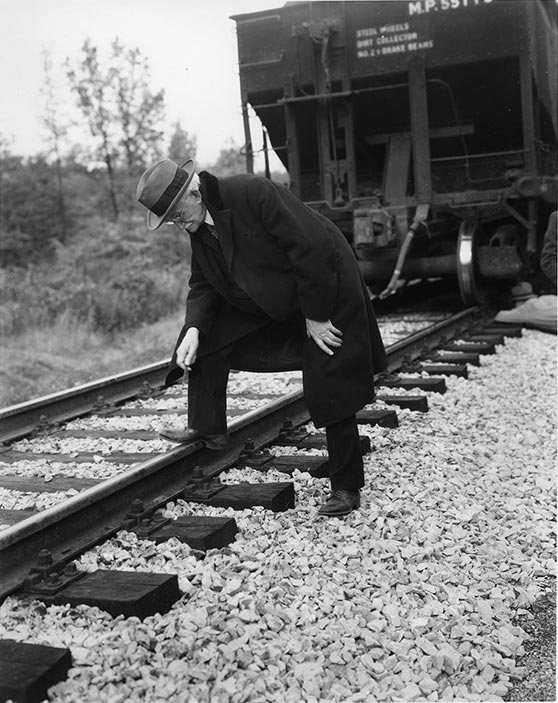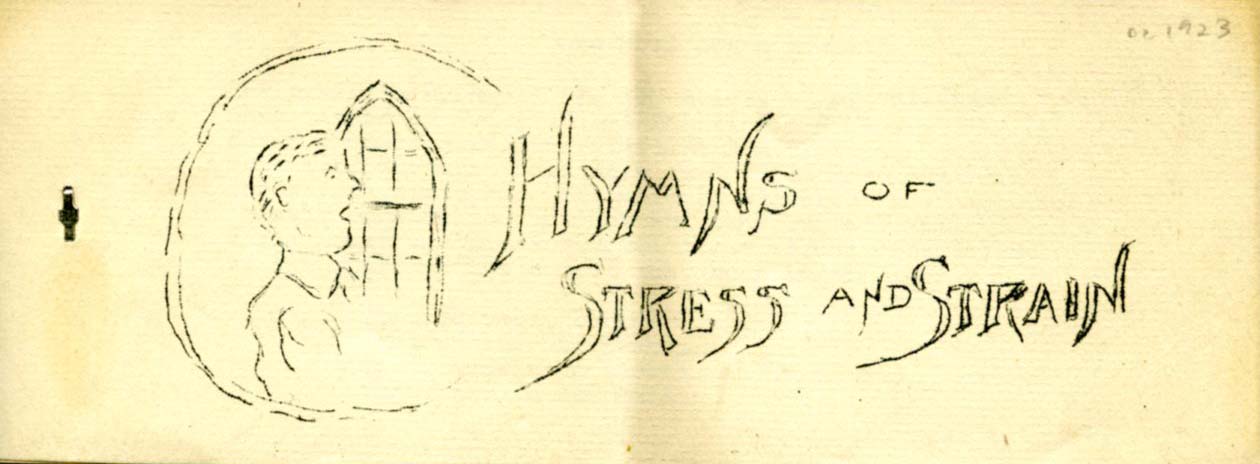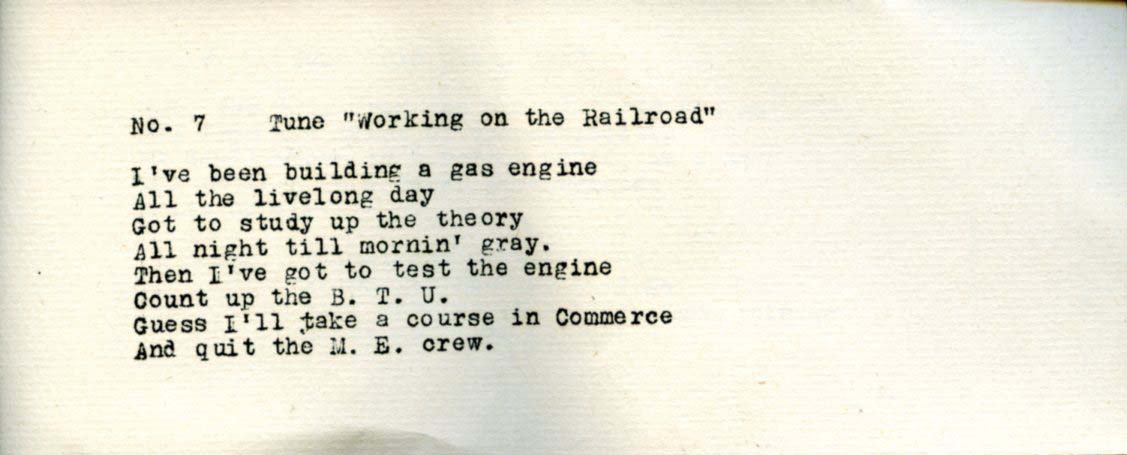Previous “Cars…” Tour Stop | Return to “Cars…” Tour Map | Next “Cars…” Tour Stop
Previous Bardeen Quad Tour Stop | Return to Bardeen Quad Tour Map | Next Bardeen Quad Tour Stop
Arthur Newell Talbot created innovations in railroad engineering. The most famous of his developments was the Railway Transition Spiral, a method for laying out easement curves at the ends of circular curves. The method has gone through multiple model editions and has been used for the development of many future railroad lines.
Talbot was born October 21, 1857 in Cortland, IL. His early education took place in Cortland, a town 55 miles west of Chicago, IL. His great mathematical aptitude was first recognized by his grandfather who encouraged him by giving him difficult problems each day, such as calculating the time the sun would rise. Talbot came to the University of Illinois in 1877, then known as the Illinois Industrial University, a mere ten years after its establishment.

While studying civil engineering at Illinois, Talbot was both an outstanding student (his scholastic average was to be the record for years to come) and very involved in extracurricular activities, including serving as secretary, vice president, and president for the Philmatheon Literary Society.
After graduating in 1881, Talbot followed a boyhood interest in railroads to Colorado, where he worked on them for four years. In 1885, Talbot returned to Illinois as an assistant professor in engineering and mathematics.
While in this position, Talbot taught a wide variety of subjects, ranging from surveying to railroad engineering. He always considered teaching to be a very important part of his life, and his students expressed their gratitude (or perhaps their frustration) in many different ways. One of those ways can be seen in a handmade songbook called “Hymns of Stress and Strain”:


Talbot would continue to help mold and shape young minds for more than forty years. During this time, he also made advancements in several areas of engineering, including formulas for areas of waterways, for bridges, and culverts, and calculating the maximum amount of rainfall, as well as groundbreaking work with sewage systems by way of septic tanks and a thorough investigation of reinforced concrete.
However, Talbot is better known for his innovations in railway engineering. The most famous of his developments is the Railway Transition Spiral, a method for laying out easement curves at the ends of circular curves. The method has gone through multiple editions and has been used in the making of many railroads.
Starting in 1914, Talbot also began a thorough investigation of railroad track. Aptly called “Stresses in Railroad Track”, the investigation was conducted with a goal of discovering the properties, mode of action, and resistances developed in various track structures under the application of locomotives and cars moving at various speeds.
After retiring from teaching, Talbot was still very involved with the University of Illinois, serving on committees, project boards, and consulting on various projects. One of the projects he consulted on was the Bay Bridge connecting San Francisco to Oakland.
These accomplishments are only part of the story: while completing his pioneering work at the University of Illinois, Talbot also married Virginia Mann Hammat in 1886. She was a classmate and active in many student affairs that Talbot was also involved in. They raised four children together: Kenneth Hammet, Mildred Virginia, Rachel Harriet, and Dorothy Newell.
Arthur Newell Talbot died on April 3rd, 1942, after almost sixty years of teaching, innovating, and mentoring in the fields of mathematics and engineering.
– Talbot Laboratory. Originally the Materials Testing Laboratory, this building was rededicated with its name honoring Arthur Talbot on April 21, 1938. In the west stairwell there is a painting of Talbot. Directions: Enter the west doors (off of Wright Street) and go up the set of stairs. It is between the first and second floor. Accessible directions: Enter the east doors (on the Bardeen Quad) and take the elevator on the east side to the second floor. Then follow the hallway to the west staircase. The painting can be seen from the second floor.
Arthur N. Talbot Papers, 1874-1919, 1921-34, 1937-38, 1941-42, 1993-2003. Record Series 11/5/21, Box 5 & 10. University of Illinois Archives. (Images 2 & 3)
Arthur N. Talbot at Railroad Track. (1941). Arthur N. Talbot Papers. Record Series11/5/21, Box 10, Folder Photos – Tribute to A.N. Talbot, Bronze Tablet, AREA. University of Illinois Archives.
Phillips, J. W.(Ed). (1994). “Biography of Arthur Newell Talbot”. A Tribute to Arthur Newell Talbot. Retrieved from http://uihistories.library.illinois.edu/TAMHistory/Talbot/contents.html
